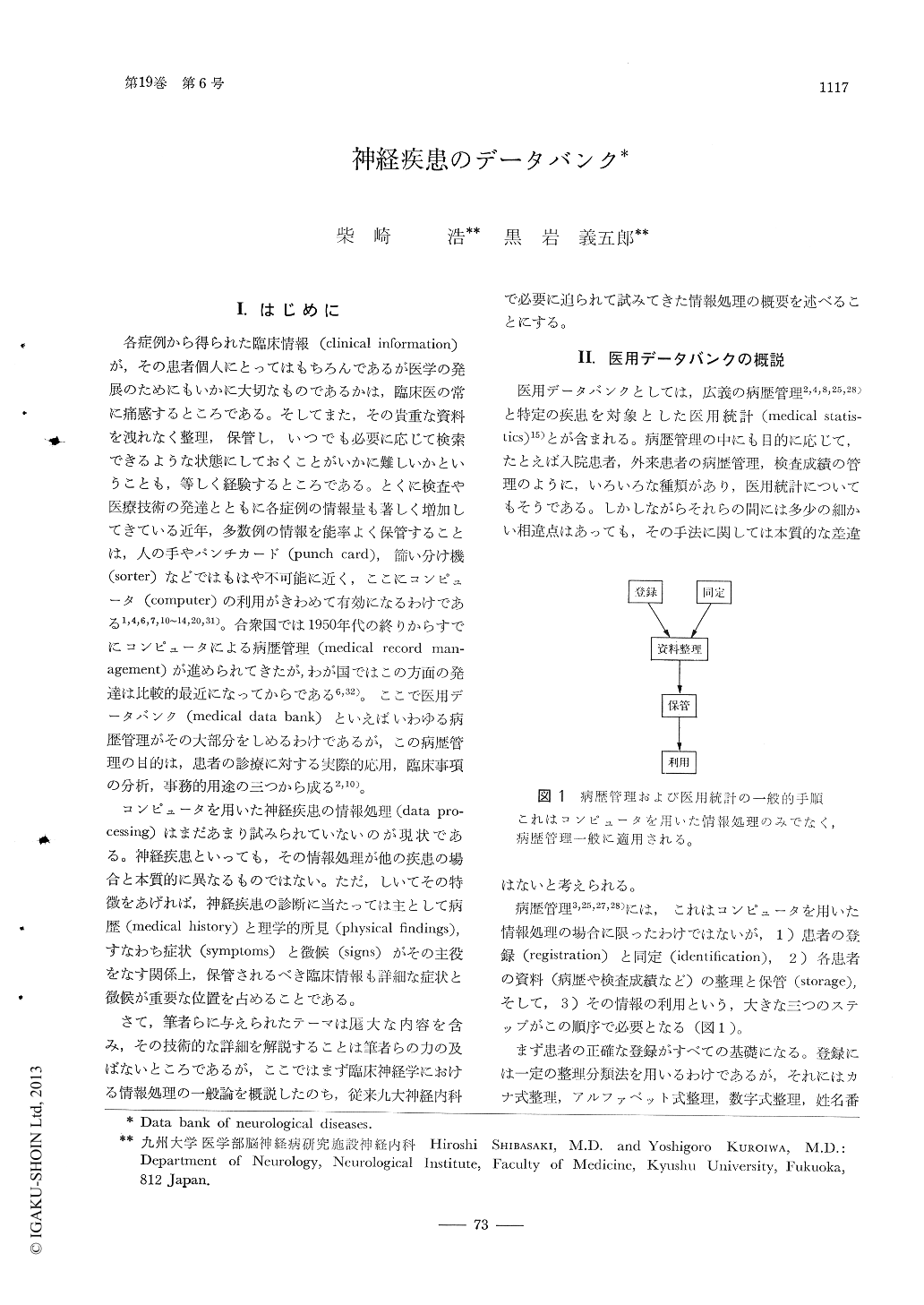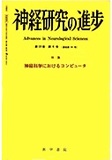Japanese
English
- 有料閲覧
- Abstract 文献概要
- 1ページ目 Look Inside
I.はじめに
各症例から得られた臨床情報(clinical infobrmation)が,その患者個人にとってはもちろんであるが医学の発展のためにもいかに大切なものであるかは,臨床医の常に痛感するところである。そしてまた,その貴重な資料を洩れなく整理,保管し,いつでも必要に応じて検索できるような状態にしておくことがいかに難しいかということも,等しく経験するところである。とくに検査や医療技術の発達とともに各症例の情報量も著しく増加してきている近年,多数例の情報を能率よく保管することは,人の手やパンチカード(punch card),篩い分け機(sorter)などではもはや不可能に近く,ここにコンピュータ(computer)の利用がきわめて有効になるわけである1,4,6,7,10〜14,20,31)。合衆国では1950年代の終りからすでにコンピュータによる病歴管理(medical record management)が進められてきたが,わが国ではこの方面の発達は比較的最近になってからである6,32)。
Electronic data processing system, which is able to store a large amount of clinical informations, plays a great role in the medical record management as well as in the medical statistics. Computer processing of clinical informations in neurology does not greatly differ from that in other fields of medicine. But,. since the diagnosis of neurological diseases largely depends on the symptoms and signs themselves, the data bank of neurological diseases is characterized by a greater proportion being occupied by symptoms and signs than in any other fields of medicine.

Copyright © 1975, Igaku-Shoin Ltd. All rights reserved.


